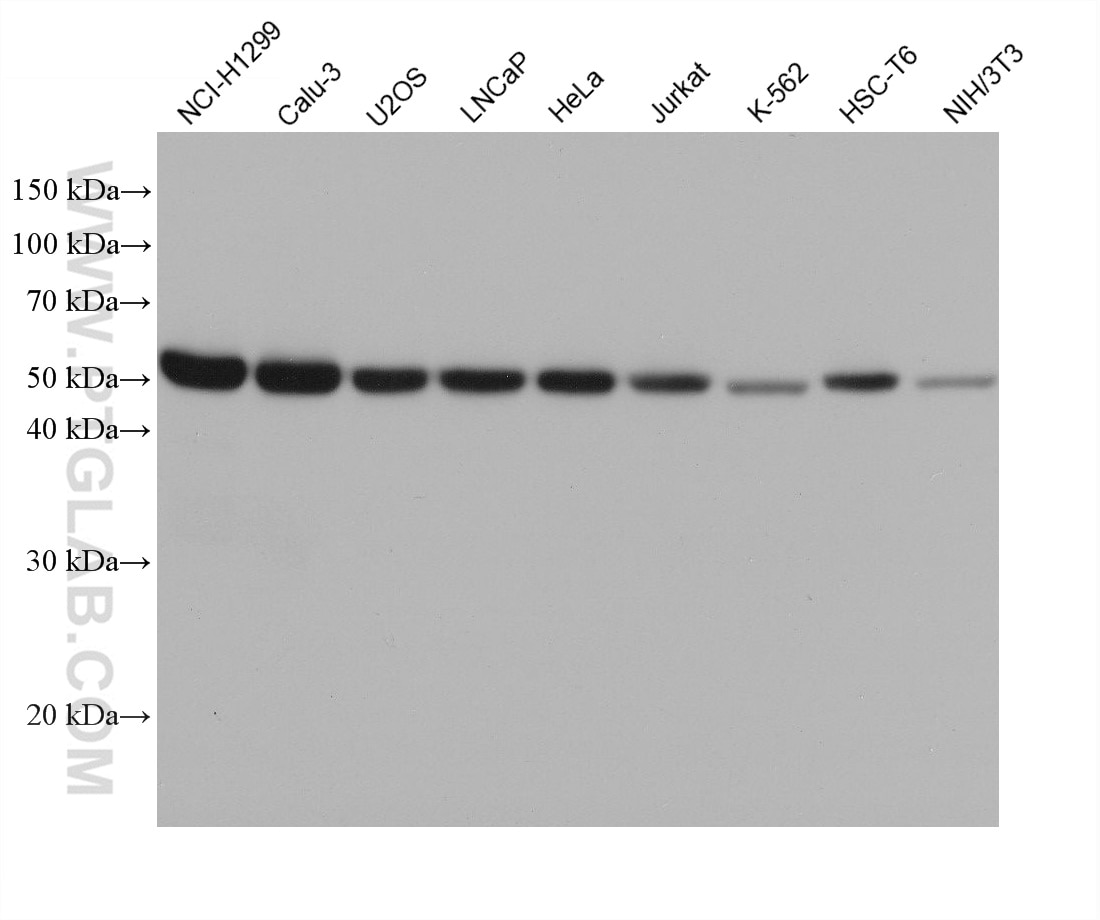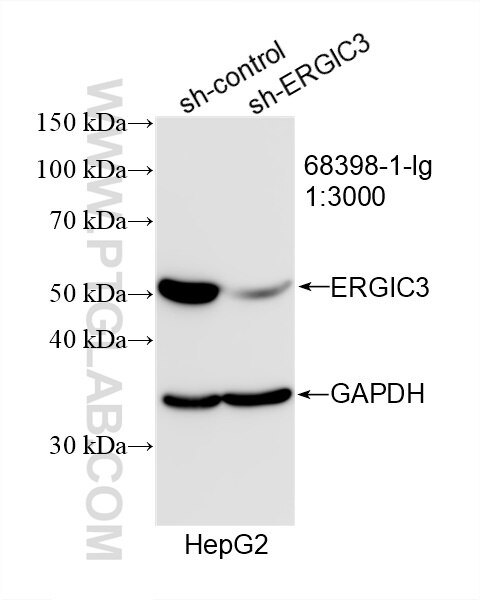ERGIC3 Monoklonaler Antikörper
ERGIC3 Monoklonal Antikörper für WB, ELISA
Wirt / Isotyp
Maus / IgG1
Getestete Reaktivität
human, Maus, Ratte
Anwendung
WB, ELISA
Konjugation
Unkonjugiert
CloneNo.
1B9F11
Kat-Nr. : 68398-1-Ig
Synonyme
Geprüfte Anwendungen
| Erfolgreiche Detektion in WB | NCI-H1299-Zellen, HeLa-Zellen, HepG2-Zellen, Jurkat-Zellen, K-562-Zellen, LNCaP-Zellen, NIH/3T3-Zellen, U2OS-Zellen |
Empfohlene Verdünnung
| Anwendung | Verdünnung |
|---|---|
| Western Blot (WB) | WB : 1:5000-1:50000 |
| It is recommended that this reagent should be titrated in each testing system to obtain optimal results. | |
| Sample-dependent, check data in validation data gallery | |
Produktinformation
68398-1-Ig bindet in WB, ELISA ERGIC3 und zeigt Reaktivität mit human, Maus, Ratten
| Getestete Reaktivität | human, Maus, Ratte |
| Wirt / Isotyp | Maus / IgG1 |
| Klonalität | Monoklonal |
| Typ | Antikörper |
| Immunogen | ERGIC3 fusion protein Ag9190 |
| Vollständiger Name | ERGIC and golgi 3 |
| Berechnetes Molekulargewicht | 383 aa, 43 kDa |
| Beobachtetes Molekulargewicht | 50 kDa |
| GenBank-Zugangsnummer | BC009765 |
| Gene symbol | ERGIC3 |
| Gene ID (NCBI) | 51614 |
| Konjugation | Unkonjugiert |
| Form | Liquid |
| Reinigungsmethode | Protein-G-Reinigung |
| Lagerungspuffer | PBS with 0.02% sodium azide and 50% glycerol |
| Lagerungsbedingungen | Bei -20°C lagern. Nach dem Versand ein Jahr lang stabil Aliquotieren ist bei -20oC Lagerung nicht notwendig. 20ul Größen enthalten 0,1% BSA. |
Hintergrundinformationen
ERGIC3 (Endoplasmic reticulum-Golgi intermediate compartment protein 3 ) is located in the cis face of the Golgi apparatus and vesicular tubular structures between the transitional endoplasmic reticulum (ER) and cis-Golgi. ERGIC3 significantly affects cell growth and causes ER stress-induced cell death, and is involved in the invasion and metastasis in hepatocellular carcinomas (HCC). (PMID: 26177443, PMID: 31142615)
Protokolle
| PRODUKTSPEZIFISCHE PROTOKOLLE | |
|---|---|
| WB protocol for ERGIC3 antibody 68398-1-Ig | Protokoll herunterladen |
| STANDARD-PROTOKOLLE | |
|---|---|
| Klicken Sie hier, um unsere Standardprotokolle anzuzeigen |



